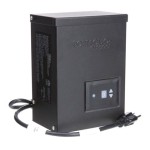Outdoor Lighting Plan: Illuminating Your Outdoor Space
Outdoor lighting is more than just illuminating a pathway or highlighting a garden feature. It's an integral part of a well-designed outdoor space, enhancing safety, security, and ambiance. A comprehensive outdoor lighting plan takes the guesswork out of the process, ensuring a cohesive and functional design. This article will guide you through the essential elements of an outdoor lighting plan, offering insights into creating a captivating and inviting exterior.
Defining Your Goals and Purpose
The first step in crafting an outdoor lighting plan is to clearly define your goals and purpose. Are you aiming to enhance security, illuminate pathways for safe navigation, create a welcoming atmosphere, or highlight architectural features? Establishing these goals will guide your lighting choices and ensure that the plan meets your specific needs. For example, if you prioritize security, you might opt for motion-activated spotlights or security cameras with built-in illumination. Conversely, if a relaxing ambiance is paramount, you may choose warm-toned string lights or lanterns to create a cozy and inviting space.
Types of Outdoor Lighting
Understanding the various types of outdoor lighting available is crucial for creating an effective plan. Common types include:
- Ambient Lighting: Provides overall illumination for the area, creating a sense of general brightness and safety. This type usually includes high-powered overhead lighting, often using fixtures like floodlights or lanterns.
- Accent Lighting: Focuses on specific elements within the outdoor space, highlighting key features and adding visual interest. This can include spotlights highlighting trees, sculptures, or architectural details.
- Task Lighting: Provides focused illumination for specific activities, such as reading on a patio or preparing food on an outdoor grill. Task lighting fixtures often include directional spotlights or wall sconces.
- Decorative Lighting: Enhances the ambiance and character of the outdoor space, using elements like string lights, lanterns, or pathway lighting to create a visually appealing and inviting atmosphere.
Essential Considerations for Your Outdoor Lighting Plan
Beyond goals and lighting types, several key considerations influence the success of your outdoor lighting plan:
- Light Source: Different light sources have distinct characteristics, impacting the overall look and feel of your space.
- Incandescent Bulbs: Offer a warm, inviting glow but are less energy-efficient.
- Halogen Bulbs: Provide bright illumination and have a longer lifespan than incandescent bulbs, but consume more energy.
- LED Bulbs: Highly energy-efficient, long-lasting, and available in various colors, making them a popular choice for outdoor lighting.
- Fluorescent Bulbs: Offer energy efficiency but may not provide the same warmth and ambiance as incandescent bulbs.
- Light Color Temperature: Measured in Kelvin (K), light color temperature influences the overall mood and ambiance of your space.
- Warm White (2700-3000K): Creates a cozy and inviting atmosphere, often used for pathways, decks, and patios.
- Cool White (4000-4500K): Offers a brighter, more clinical light, suitable for security lighting and task lighting.
- Daylight (5000-6500K): Mimics natural daylight, often used for accent lighting or areas where clear visibility is needed.
- Fixture Design: Choose fixtures that complement your landscaping and architectural style, ensuring a cohesive and aesthetically pleasing design. Consider materials like metal, wood, or stone to match your existing structures and outdoor decor.
- Light Direction: Direct light upwards for accent lighting, downwards for ambient lighting, or sideways for pathways to illuminate the surrounding area effectively. Consider using diffusers to soften harsh light and create a more welcoming atmosphere.
- Control Systems: Implement smart lighting features with timers, dimmers, or remote controls for added convenience and energy savings. These systems allow you to adjust brightness, schedule lighting, and personalize your outdoor experience.
By carefully considering these factors, you can create an outdoor lighting plan that complements your vision, enhances your outdoor space, and meets your specific needs. Remember, the goal is not just to illuminate the area but also to create an ambiance that invites relaxation, fosters a sense of security, and showcases the beauty of your outdoor surroundings.

Plan Your Landscape Lighting Design Twilight Designs

Outdoor Lighting How To Design A Garden Scheme Pt Iii

Outdoor Landscape Lighting Effects Garden Design

Outdoor Lighting How To Design A Garden Scheme Pt Iii

Outdoor Landscape Lighting Design Tips Ideas Environmental Designs

Landscape Lighting Plan Symbols Gcadplus

Landscape Lighting Design Overview

Outdoor Lighting How To Design A Garden Scheme Pt Iii

Landscape Lighting Design Jeffrey Heid Architect

Plan View Lighting Landscape Garden
Related Posts







